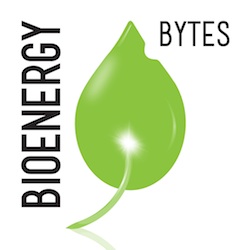 The Will Steger Foundation is launching Climate Minnesota: Local Stories, Community Solutions to communicate about climate change through local science, stories, and solutions that encompass the broad range of impacts that Minnesotans are seeing now. Join them for a local convening and share your own climate stories.
The Will Steger Foundation is launching Climate Minnesota: Local Stories, Community Solutions to communicate about climate change through local science, stories, and solutions that encompass the broad range of impacts that Minnesotans are seeing now. Join them for a local convening and share your own climate stories.- Pattern Energy Group Inc. has announced the pricing of an underwritten public offering of US$351.00 million, or 12,000,000 shares, of its Class A common stock at a public offering price of US$29.25 per share. The Company is selling US$204.75 million, or 7,000,000 shares, of Class A common stock and the selling shareholder, Pattern Energy Group LP, is selling US$146.25 million, or 5,000,000 shares, of Class A common stock. The underwriters of the offering have a 30-day option, exercisable until March 5, 2015, to purchase up to an additional US$52.65 million, or 1,800,000 shares, of Class A common stock from the Selling Shareholder. The offering is scheduled to close on February 9, 2015, subject to customary closing conditions.
- Atlantic Wind & Solar, Inc. has connected its newest utility scale solar plant in Ontario Canada to the grid. The solar power plant was developed by its Canadian subsidiary Atlantic Solar Inc. The photovoltaic plant consists of a 111.585 KW AC/ 132.345 KW DC fixed array of 255W poly-crystalline modules. The power will be sold to the Ontario Power Authority for 20 years at a rate of 71.3 ¢/kWh.
- Dominion Voltage, Inc. (DVI), a grid optimization subsidiary of Dominion Resources, Inc. has announced their participation in an innovative Volt/VAR optimization pilot program at Pacific Gas and Electric Company (PG&E). The pilot project will enable the utility to evaluate the benefits of optimizing their distribution system voltage for the purposes of energy efficiency, Volt/VAR optimization, and voltage stabilization. DVI’s EDGE Volt/VAR optimization solution leverages Silver Spring’s AMI network and UtilityIQ Power Monitor to optimize voltage as part of PG&E’s Smart Grid Deployment Plan. The technology doesn’t require any behavioral changes or purchases by utility customers, which is common among more traditional forms of energy efficiency.

